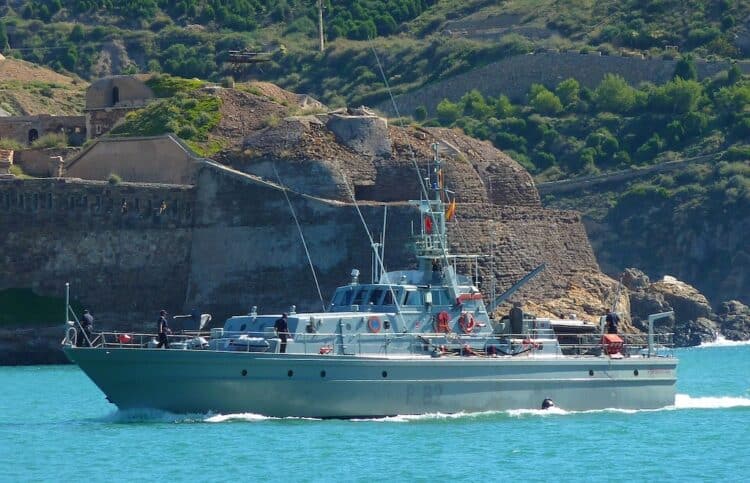The Spanish Navy Surveillance Patrol Boat ‘Formentor’, based at the Cartagena Arsenal, plans to carry out a patrol along the Alicante coast between April 2 and 5, and commander TN Carlos Paula Diago invites you to welcome her during the tasks and take a look around.
During this navigation, she will call at the ports of El Campello, Calpe and Torrevieja. Thus, it is planned that on the 3rd it will dock at the Real Club Náutico de Calpe, where it will hold an open day to be visited from 5:30 p.m. to 8 p.m. At sunset, there will be a traditional solemn lowering of the National Flag, where civil and military authorities will be present. This event can also be witnessed from the pontoon of the Nautical Club.
The ship is carrying out surveillance and security tasks in the maritime spaces of sovereignty, as well as naval presence tasks along the coastline. Its tasks include the surveillance and control of maritime traffic, environmental protection, fishing surveillance and the protection of underwater archaeological heritage, as well as carrying out collaborations with other state organisations with jurisdiction in the maritime field.
During its operations, it is common to enter different national ports on the Mediterranean coast and bridge a gap between the Navy and the civilian population.
The Formentor patrol boat
The patrol boat ‘Formentor’, belonging to the ‘TORALLA’ class, was built at the Viudes Shipyards (Barcelona) and delivered to the Navy in 1989. This unit is integrated into the Command of the Maritime Action Force Units in Cartagena (MARCART), under the direct dependence of the Admiral of Maritime Action (ALMART).
This is the Formentor patrol boat:
- LENGTH – 28.5 metres
- DRAFT – 1.88 metres
- PROPULSION – 2 MTU 8V 2,100 HP diesel engines.
- MAXIMUM SPEED – 20 knots.
- RANGE – 1,000 miles at 12 knots
- ARMAMENT – 1 BROWNING 12.7 mm single machine gun
- RADARS – 2 KODEN navigation radars
- CREW – 12 people (1 officer, 2 non-commissioned officers, 2 first corporals and 7 corporals and sailors).
MARCART ensures the effectiveness, preparation and readiness level of the currently assigned units. This command has its historical origin in the first torpedo boat flotilla, which was based in Cartagena and was created by the Squadron Law of 1887. Associated with this command is the Cartagena Naval Command, responsible, among other tasks, for supporting the national and foreign warships and the Naval Cooperation and Guidance for Maritime Transportation (NCAGS).





